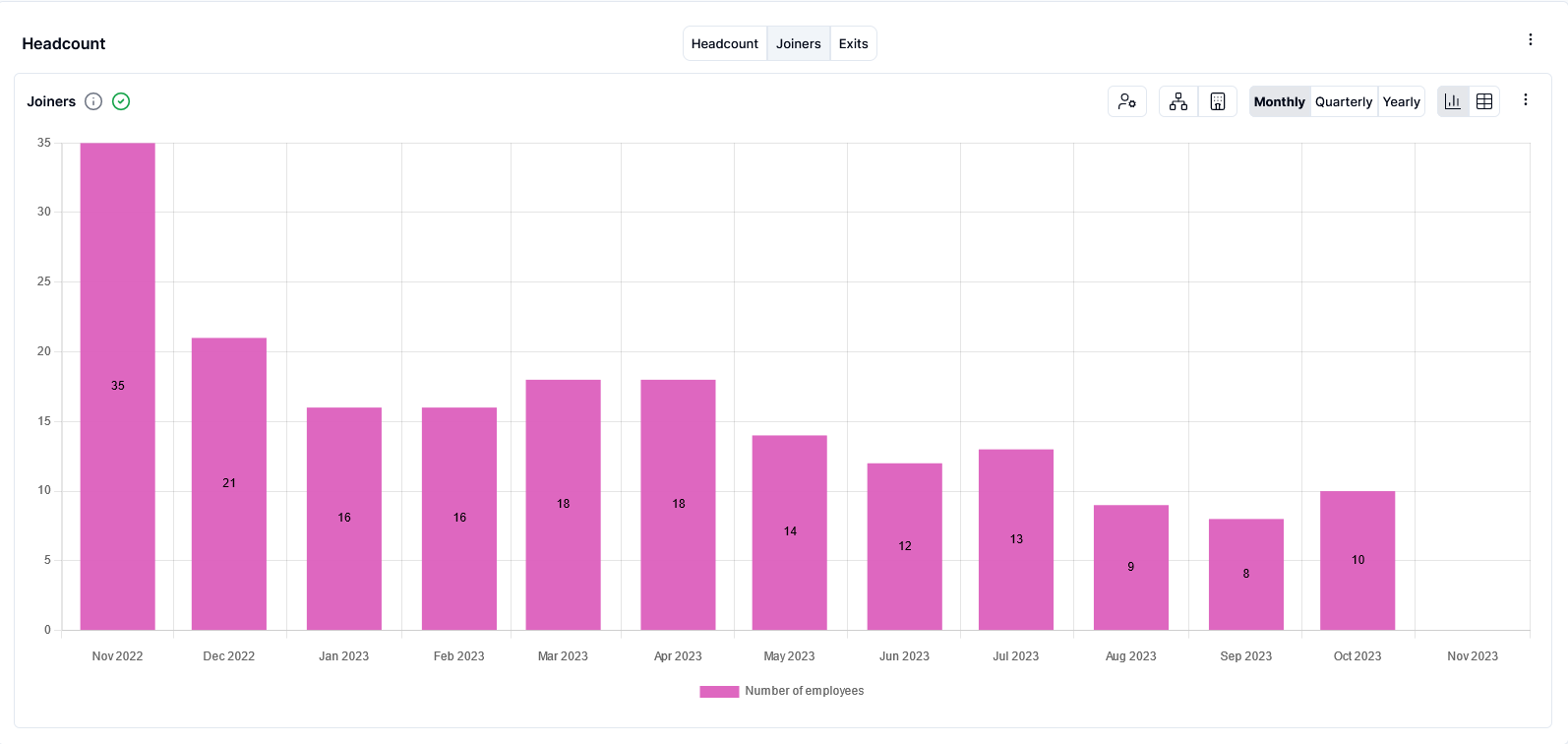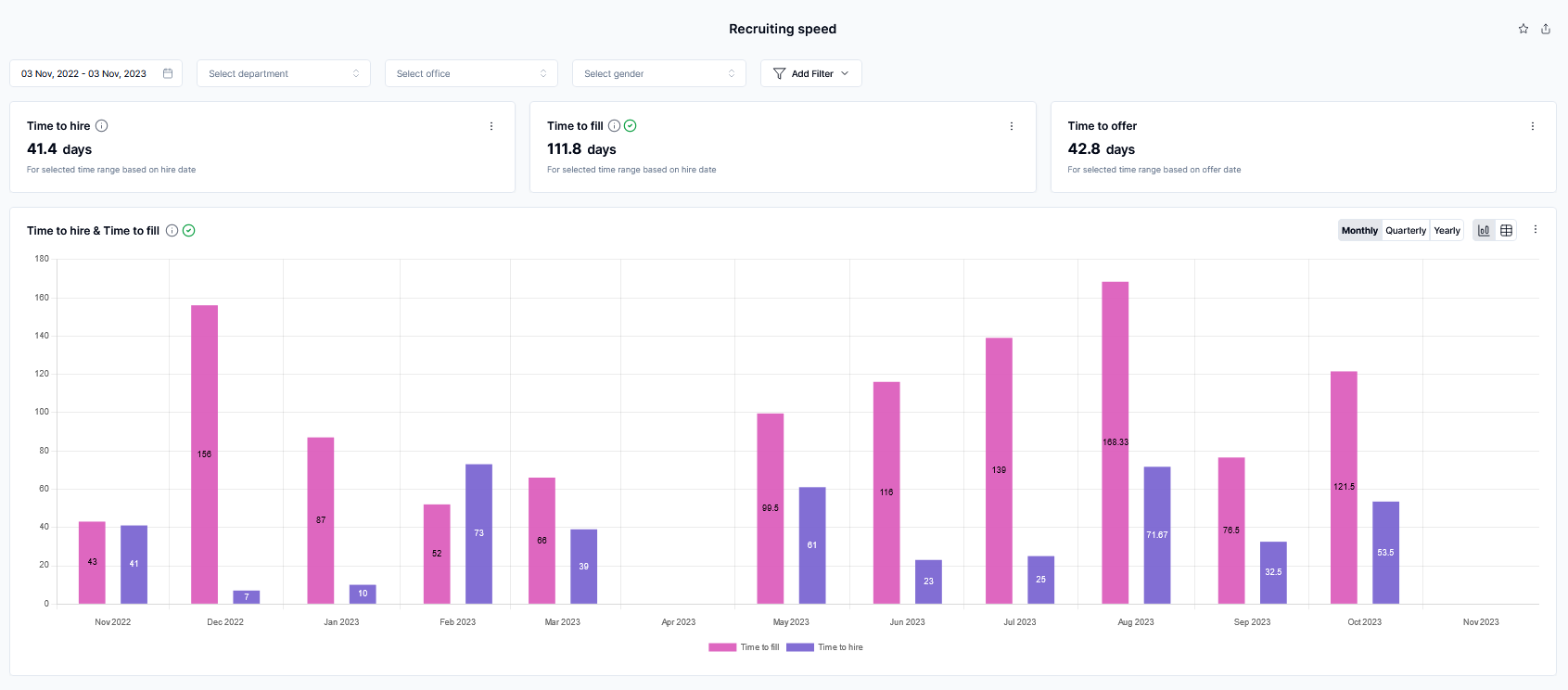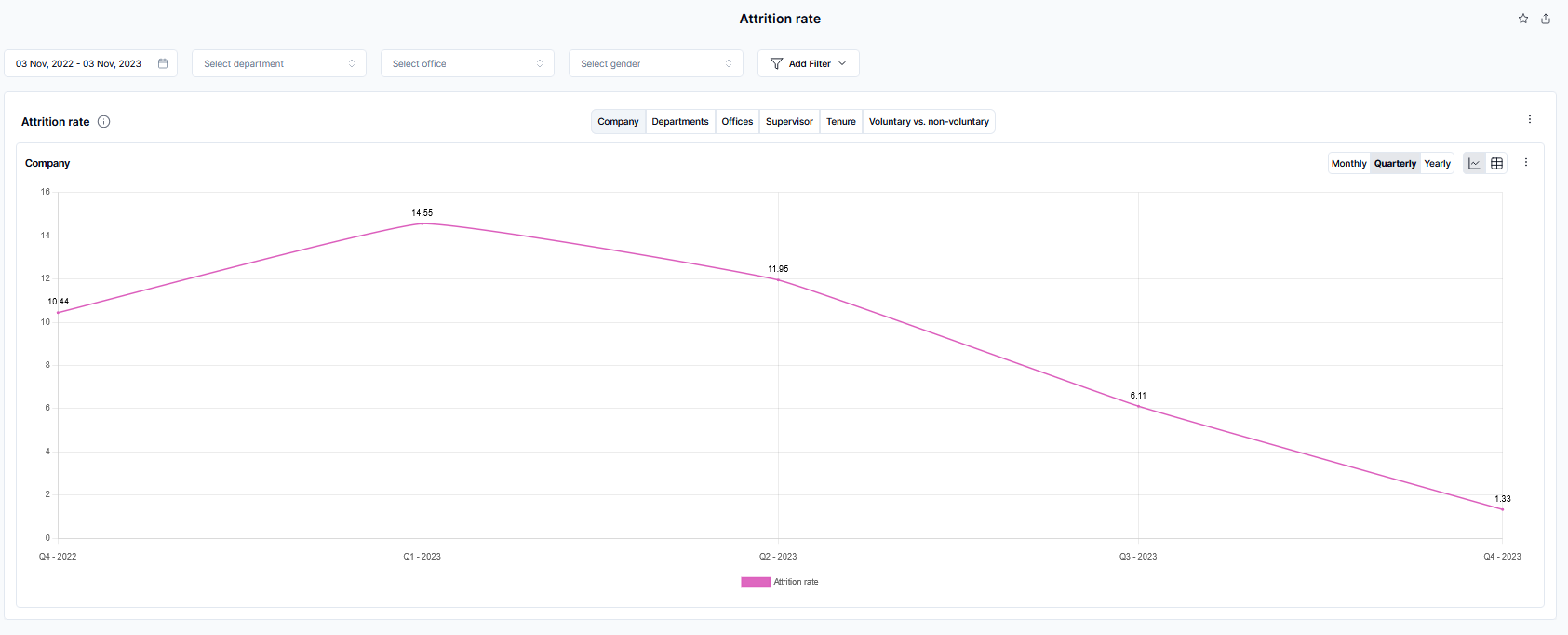We are excited to announce our €2.3 Million Pre-seed round led by Earlybird-X! →
Budgeting your way to HR Success in 2024: Tips and Trends
03 Nov

In the fast-paced world of modern business, HR budgeting plays an important role in steering organizations towards success. By strategically allocating resources, HR professionals can cater to the organization’s needs, from recruiting skilled individuals to nurturing top-performing employees and minimizing staff turnover. Leveraging the power of data-driven HR budget planning has become instrumental in ensuring the alignment of financial resources with strategic HR goals.
Mastering Data-Driven HR Budget Planning: Key Measures for Success
To fully harness the power of data-driven HR budget planning, HR executives can implement the following crucial measures:
- Analyze Past Performance and Forecast Future Expenses: Conduct a comprehensive evaluation of the company’s objectives, strategic goals, and financial plan to gain a holistic understanding of the organization’s overall functions.
- Gather Data: Scrutinize past recruitment objectives, conversion rates, and attrition metrics to identify areas for improvement. Evaluate the accuracy of assumptions related to the market, hiring platforms, salary adjustments, and role budgets.
- Review Your Current Workforce Situation: Assess the composition of your workforce and identify key individuals. Analyze the distribution of work across teams, identify skill gaps, and determine areas for development. Prioritize roles for hiring based on critical business needs.
- Translate Data into Actions: Forecast recruitment costs, time-to-fill positions, and time-to-fill productivity, aligning them with HR budget allocation. Understand the underlying causes of attrition and deviations to develop effective measures and actions.
- Be Part of Business Decision-Making: Present your budget in a clear, concise, and compelling manner to the leadership. Collaborate with key stakeholders to prioritize strategic plans considering goals, risks, and financial constraints. Advocate for data-driven approaches and provide workforce insights.
It’s essential to note that company policies profoundly influence HR budgeting, with certain costs enhancing employee efficiency. Therefore, it is crucial to assess and incorporate performance-enhancing expenses, particularly for HR development programs, encompassing administrative, personnel, and travel costs.
Challenges with Demonstrating HR's ROI: Overcoming Obstacles with Strategic Alignment
Human resource activities often lack direct monetary value, posing a challenge in measuring their impact on the organization’s financial performance. However, aligning HR initiatives with strategic business objectives enables the identification of indirect ways in which HR positively influences the bottom line. These include enhanced employee productivity, improved retention rates, strengthened employer branding, and reduced recruitment costs.
Strategies to Demonstrate HR’s ROI and Its Value Within the Organization:
- Align HR Strategies with Business Objectives: Uncover the impact of HR activities, from productivity enhancements to reduced recruitment costs.
- Track Key HR Metrics: Monitor critical HR metrics, including turnover rates, to facilitate effective strategy assessment.
- Conduct a Cost-Benefit Analysis: Utilize a cost-benefit analysis to quantify the value of HR initiatives, providing concrete evidence of their profitability.
- Effective Stakeholder Communication: Utilize data-backed narratives and compelling infographics to secure support from decision-makers, emphasizing the positive impact of HR initiatives on the organization’s bottom line.
By integrating these strategic measures and overcoming challenges, HR professionals can position themselves as indispensable drivers of organizational success, leveraging data-driven insights to maximize the impact of HR initiatives and effectively manage resources in line with overarching business objectives.
Harnessing the Power of a People Analytics Platform in HR Budgeting
In the digital age, the integration of a robust people analytics platform can revolutionize the way HR professionals approach budgeting. By harnessing the power of data-driven insights, these platforms enable HR teams to make informed decisions, optimize resource allocation, and align budgetary priorities with strategic business goals.
From forecasting future talent requirements to identifying patterns in employee performance, a people analytics platform offers a comprehensive understanding of the workforce dynamics, empowering HR leaders to allocate resources more effectively and anticipate potential budgetary needs.
Our specialists recommend tracking the Headcount (Joiners), Recruiting Speed, and Attrition rate. Take a look at how we have implemented these dashboards in our people analytics platform:

Headcount (Joiners)
Real-time visualization of recent employee onboarding, offering insights into organizational growth.

Recruiting Speed
Real-time dashboard tracking recruitment velocity, providing insights into hiring efficiency and speed.

Attrition Rate
Real-time display of employee turnover, providing insights into workforce turnover and retention.
With advanced features such as predictive analytics and real-time reporting, a people analytics platform can provide valuable foresight into talent management, enabling HR professionals to proactively address challenges, streamline operations, and enhance overall organizational efficiency. By leveraging data-backed insights, HR leaders can justify budget allocations, demonstrate the impact of strategic HR initiatives, and contribute significantly to the long-term success of the organization.
Would you like to find out more about our platform?
We are pleased to show you through a personalized demo how our product can help you with your HR-Strategy and Initiatives. Click here to book a meeting.
Recent Posts

Insight: Gender Pay Gap
February 12, 2025
The Challenges of People Analytics
November 12, 2024
People Analytics: Benefits, Origins & Best Practices
November 12, 2024Categories
- Analytics (2)
- Collaboration (1)
- Customer Sucess Stories (1)
- Data Management (1)
- Foundations (9)
- Human Resources (HR) (3)
- Platform (1)
- Recession Times (2)
- Tech Stack (1)
- Uncategorized (7)
- Use Cases (4)
PRODUCT
People Planning & Scenarios
Sharing & Collaboration
RESOURCES
STAY IN THE LOOP
Copyright © 2024 peopleIX GmbH. All rights reserved.

